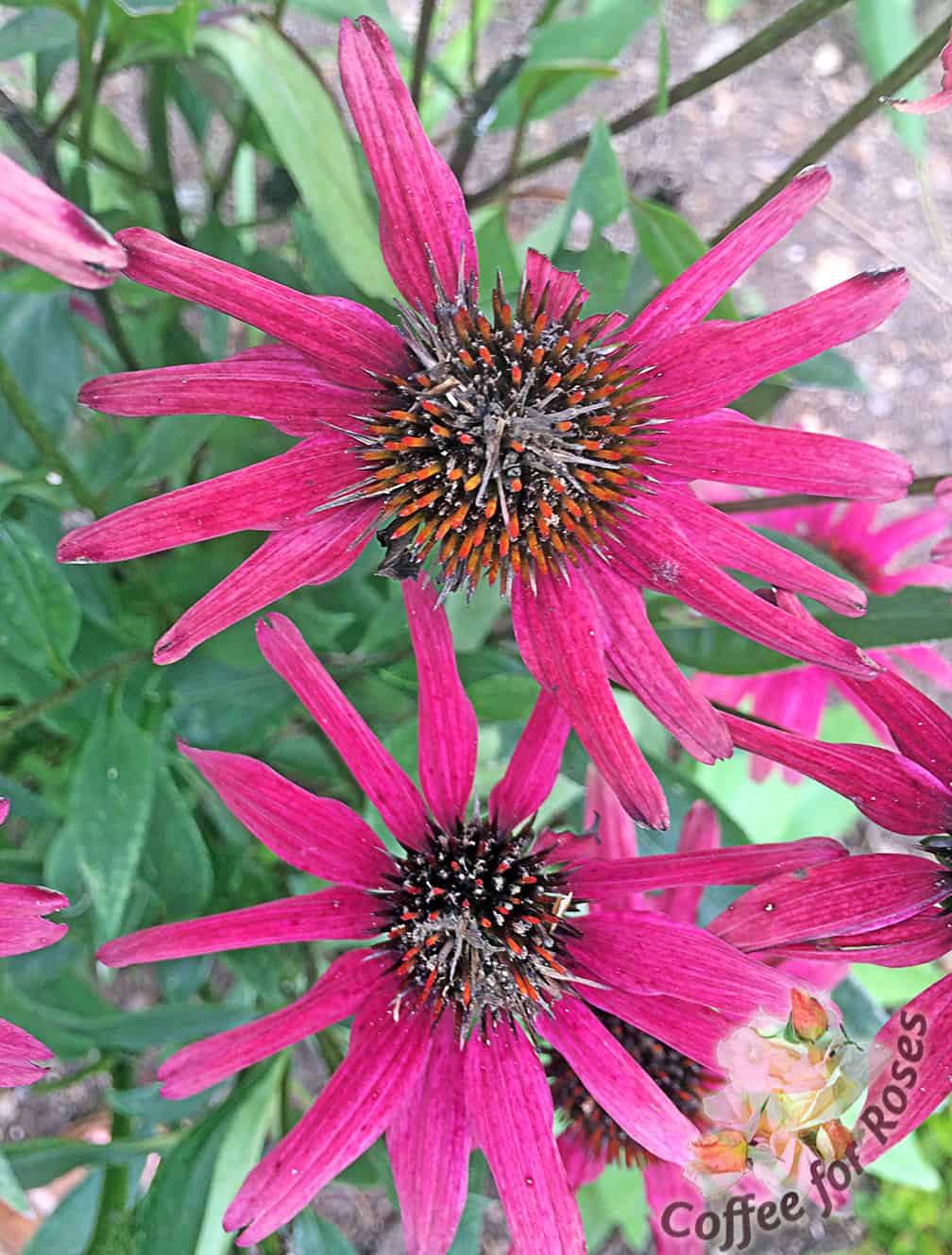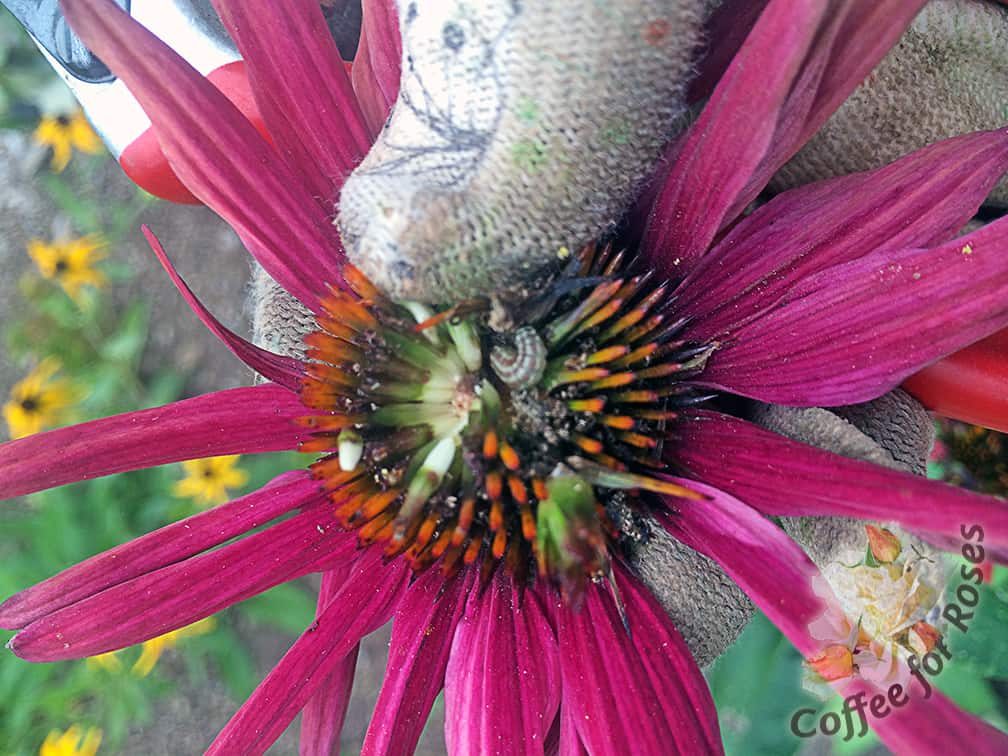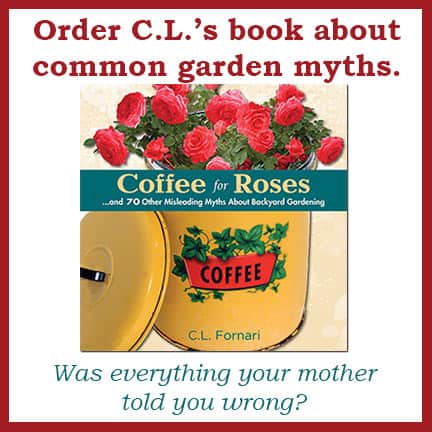If you love the coneflowers as much as I do, or use Echinacea for your cut-flower business, be on the lookout for this pest: sunflower moth, aka Homoesoma electellum. My friend Roberta told me about it the other day and so I took a close look at the coneflowers that remain in my garden. Sigh. It was there.
This moth is small and white. When the Echinacea flowers just start to open the moth lays eggs around the cone and when they hatch the larvae, then white or pale yellow, dig into the cone where they feed.

As the larvae feed they push their poop, also known as frass, out of the cone. Suspect that you have this pest if the cones of your Echinacea look muddy, dirty or have blackened areas. That streak of what looks like dirt on the centers of these flowers is the telltale frass from the larvae.
When you break a dirty cone open you find a “worm.”

This is the Sunflower moth, Homoesoma electellum, larva.
Most of my Echinacea were ready to be deadheaded anyway, so I just clipped off all the fading flowers and put them in the garbage, not into the compost. I don’t know if any birds would eat the larvae if they could get at them, but I do know that as my coneflowers start to open next spring I’ll be spraying (early in the morning so the wet mix doesn’t hit the bees) with Spinosad. In fact, I’ll be spraying my Milkshake Echinacea today to protect those flowers that still look good in the garden.

I realized that I’d deadheaded a bunch of coneflowers last week, and tossed them into the compost without knowing that they were probably infested with the larvae of this moth. So today I went back and fished the cones out of the compost – sure enough, many of them were! You can see a larva on the top edge of this cone – after I split it open he tried to crawl away.

You can either throw the infested cones in the garbage, or put them where they can’t possibly pupate into the soil. In a clay flower pot in a hot garden shed, for example. If you routinely burn garden debris these could also be tossed into the fire. Just don’t throw them in the compost or leave them in the garden.
I’m hoping that by spraying with Spinosad early in the season next year I’ll be able to leave the Echinacea cones in the garden as I used to, so that the birds can eat the seeds in the late fall and early winter.



